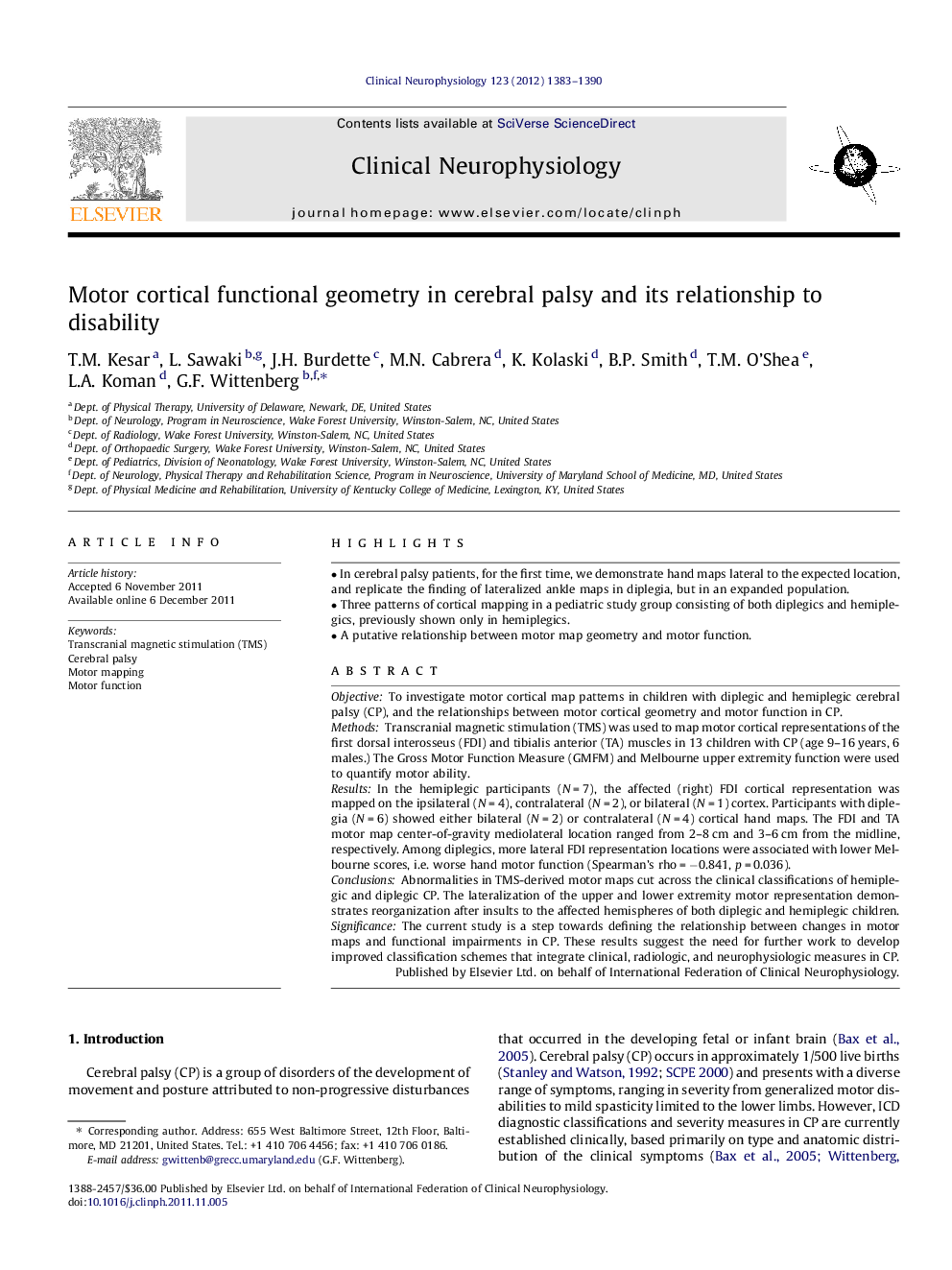| Article ID | Journal | Published Year | Pages | File Type |
|---|---|---|---|---|
| 3045501 | Clinical Neurophysiology | 2012 | 8 Pages |
ObjectiveTo investigate motor cortical map patterns in children with diplegic and hemiplegic cerebral palsy (CP), and the relationships between motor cortical geometry and motor function in CP.MethodsTranscranial magnetic stimulation (TMS) was used to map motor cortical representations of the first dorsal interosseus (FDI) and tibialis anterior (TA) muscles in 13 children with CP (age 9–16 years, 6 males.) The Gross Motor Function Measure (GMFM) and Melbourne upper extremity function were used to quantify motor ability.ResultsIn the hemiplegic participants (N = 7), the affected (right) FDI cortical representation was mapped on the ipsilateral (N = 4), contralateral (N = 2), or bilateral (N = 1) cortex. Participants with diplegia (N = 6) showed either bilateral (N = 2) or contralateral (N = 4) cortical hand maps. The FDI and TA motor map center-of-gravity mediolateral location ranged from 2–8 cm and 3–6 cm from the midline, respectively. Among diplegics, more lateral FDI representation locations were associated with lower Melbourne scores, i.e. worse hand motor function (Spearman’s rho = −0.841, p = 0.036).ConclusionsAbnormalities in TMS-derived motor maps cut across the clinical classifications of hemiplegic and diplegic CP. The lateralization of the upper and lower extremity motor representation demonstrates reorganization after insults to the affected hemispheres of both diplegic and hemiplegic children.SignificanceThe current study is a step towards defining the relationship between changes in motor maps and functional impairments in CP. These results suggest the need for further work to develop improved classification schemes that integrate clinical, radiologic, and neurophysiologic measures in CP.
► In cerebral palsy patients, for the first time, we demonstrate hand maps lateral to the expected location, and replicate the finding of lateralized ankle maps in diplegia, but in an expanded population. ► Three patterns of cortical mapping in a pediatric study group consisting of both diplegics and hemiplegics, previously shown only in hemiplegics. ► A putative relationship between motor map geometry and motor function.
